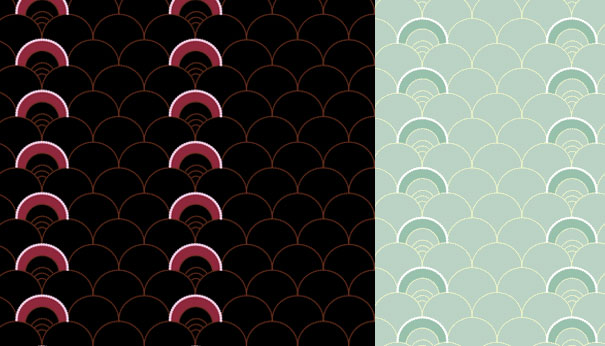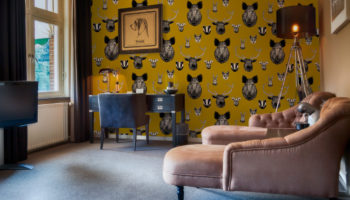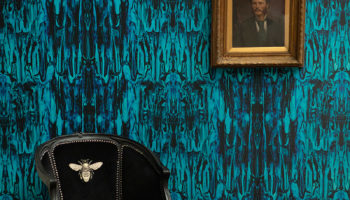At Bklyn Designs: Grow House Grow Naturalist Collection
Grow House Grow’s New Naturalist Collection
is a series of wall-coverings after my own heart. That’s because–like just about anything of value–they each have a story to tell. In fact, the Brooklyn-based company helmed by designer Katie Deedy aspires towards this type of construct with every new pattern: “We specialize in narrative-inspired wallpaper design… our lifelong love of storytelling and affinity for pattern shapes every hand printed roll we produce.” So it was with last year’s Parlor Collection, covered by fellow 3ringer Alicita Rodriguez, and so it is again with this year’s Naturalist Series, debuting at everyone’s favorite hometown event, Bklyn Designs.
Ms. Ward. Designed by Grow House.
The story of the Naturalist collection involves three, well, naturalists–19th. century female scientists Mary Treat, Mary Ward, and Jeanne Villepreux-Power. In chronicling the work of these scientific pioneers, the collection not only has an ecological/zoological bent, but a feminist slant as well. As Deedy explains, “As female scientists in the nineteenth century, these women faced an oxymoronic distinction that their male counterparts eluded. Sexist barriers discouraged most young girls from the pursuit of an intellectual calling, yet our subjects persevered by challenging the status quo and developing their own route to recognized scholastic excellence.” Therein lies a tale indeed, but for brevity’s sake I’ll refer you back to the bios, and just say that Treat’s work involved botanticals, Ward Specialized in insects, and Madame Jeanne was smitten with the creatures of the sea.
Jeanne Villepreux-Power. Designed by Grow House.
Mary Treat. Designed by Grow House.
Ms. Ward. Designed by Grow House.
Just so, the Treat patterns feature the inscrutably over-lapping foliage of the insectivorous Utricalaria plant. The bug-eating botanical was a focus of Treat’s research, and by demonstrating that small hairs around the perimeter of its leaves triggered a shutting and trapping mechanism when agitated, she influenced the work of none other than Charles Darwin. For her part, Ms. Ward was so enamored of the amazing intricacies of bugs that she became an expert in insects as well as techniques of microscopy. Her 1858 tome, A World of Wonders Revealed by the Microscope, enjoyed such success that it was re-printed eight times. Ward’s wallpaper shows a woman in Georgian-era dress (presumably, the scientist herself) afrolic with scorpions, beetles, crickets, and even a praying mantis: “true to her love of scale, this pattern blends late-Georgian silhouettes with over-sized insects–an entomologist’s dream.” Lastly, let’s look at the oceanic leanings of Madame Villepreux-Power. A lifelong lover of mollusks, her achievements in the field involved findings apropos of easier observation of these shelled invertebrates. Among her achievements are the development of the aquarium, pioneering research on the mating habits of the Argonauta Argo Octopus, and the hypothesis that declining river species could be replenished by introducing tank-raised fish. Her pattern dramatizes her success in aquatic scholarship via nouveau-themed imagery of an expansive bed of scalloped mollusks.







Leave a Reply